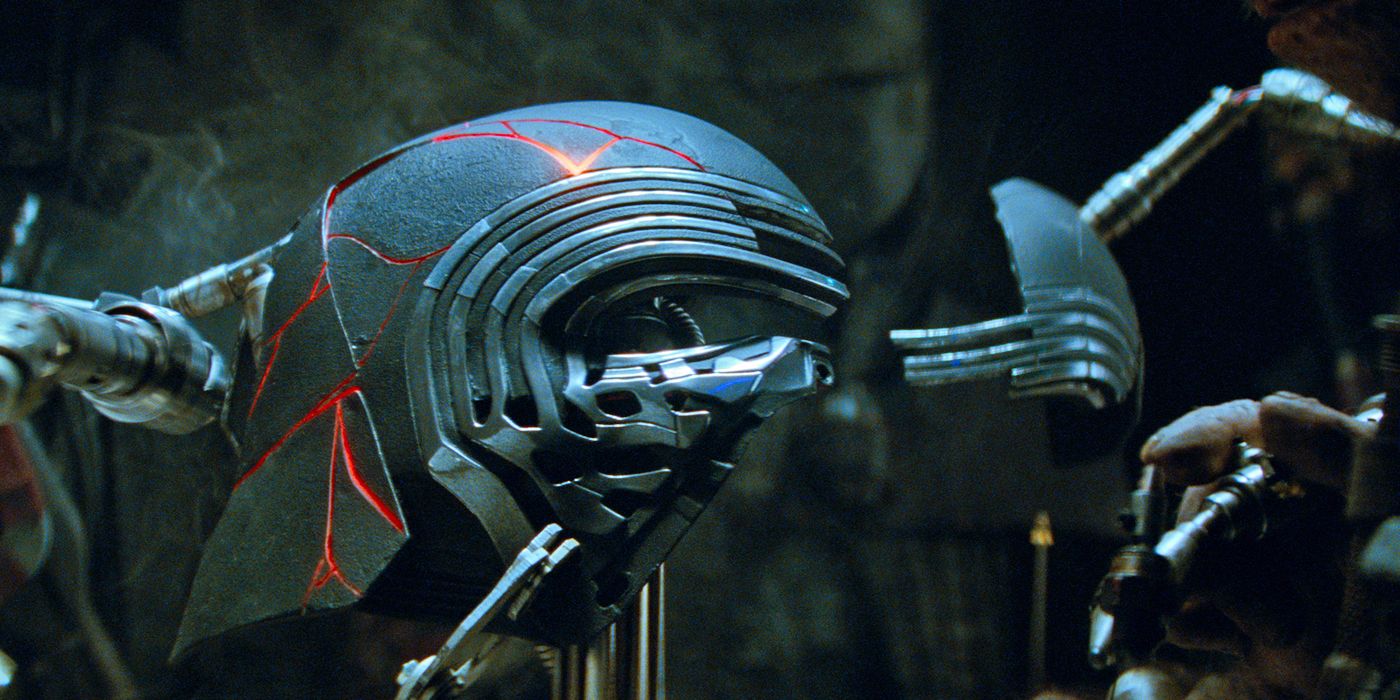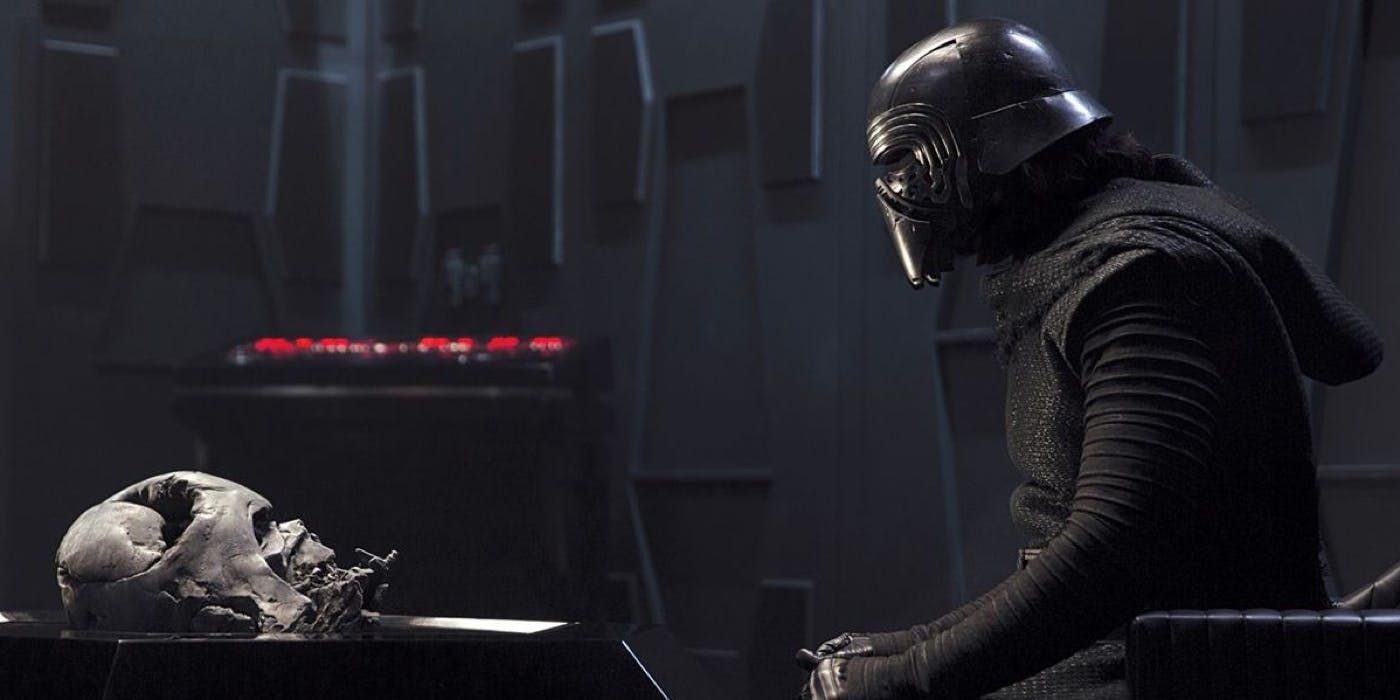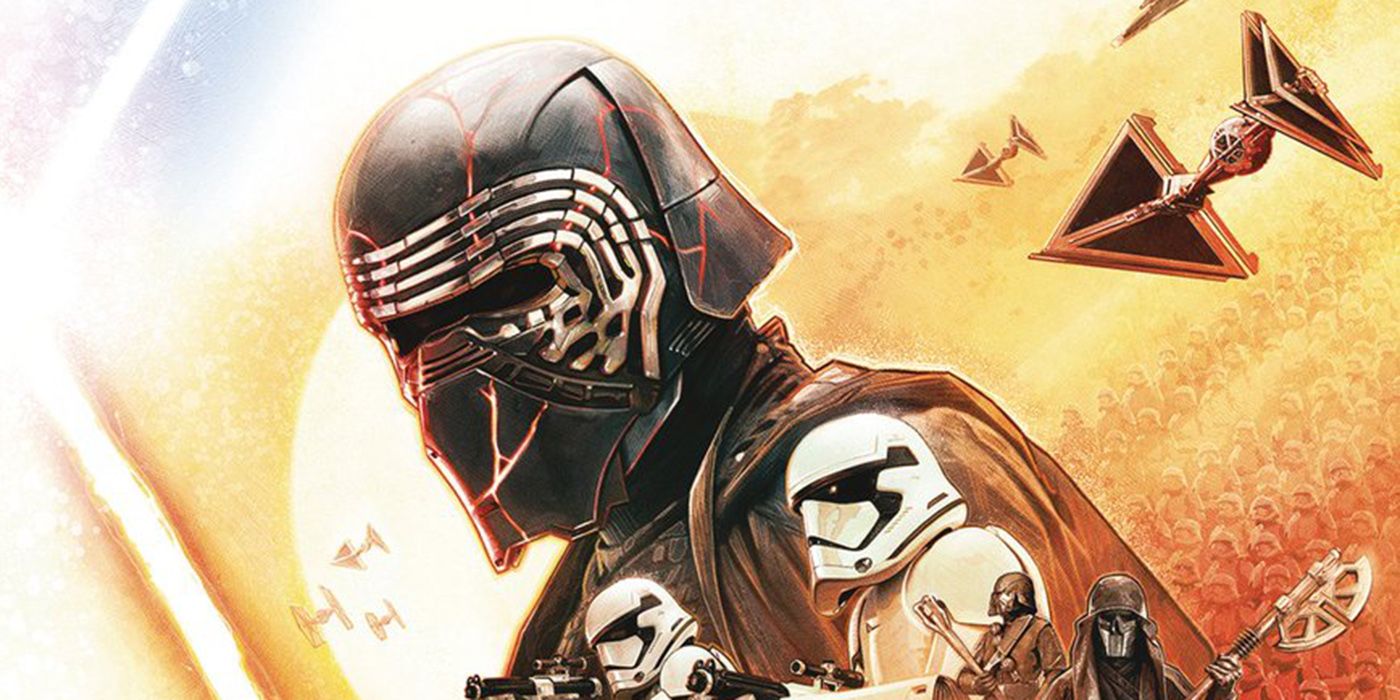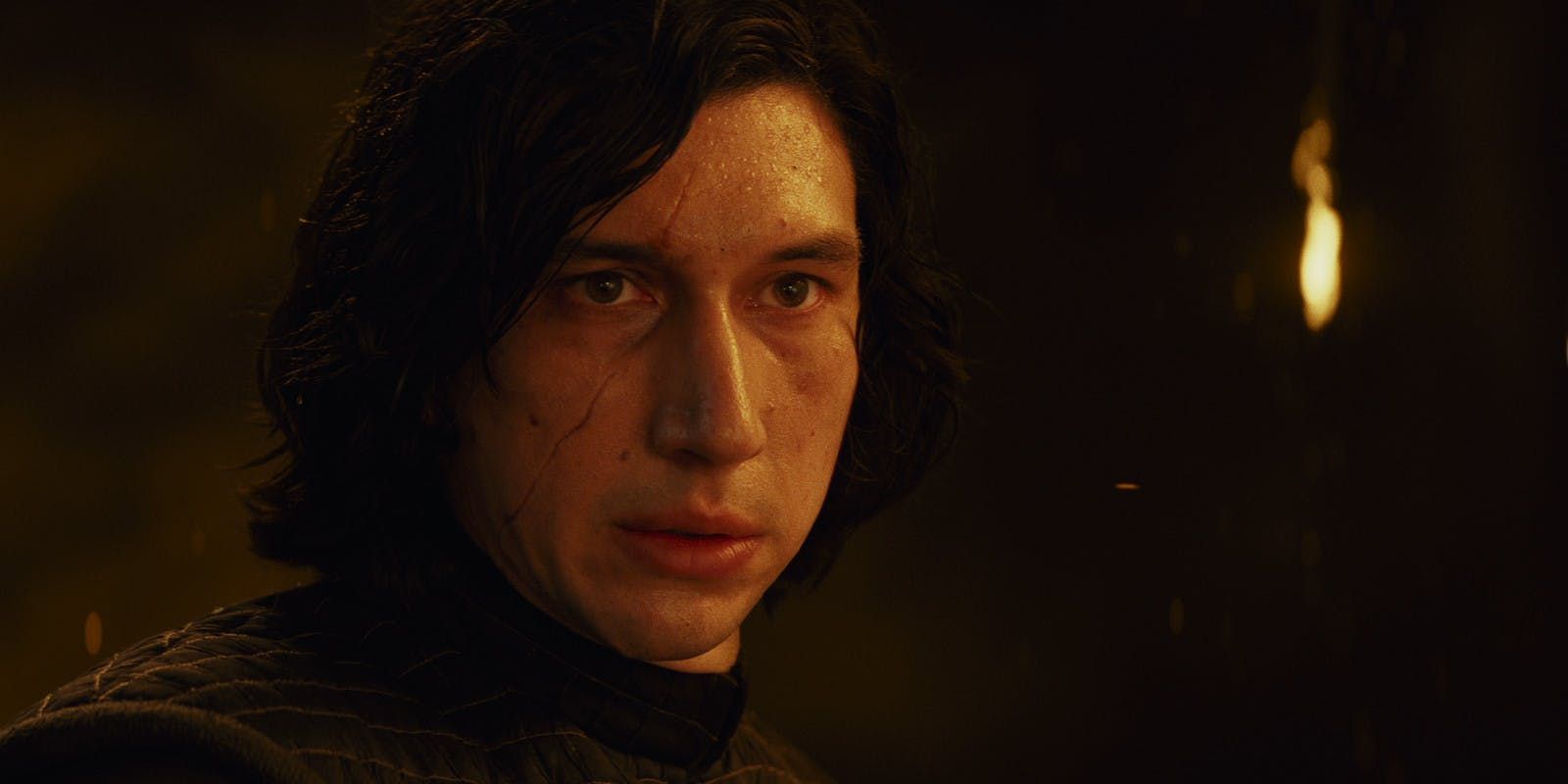The rumors of Kylo Ren's new helmet have proven to be correct by the steadily releasing stream of Star Wars promotional images and toys in the run-up to The Rise of Skywalker. While the Skywalker Saga's brooding antagonist has been mostly shown mask-less in Episode IX's first trailer and the D23 sizzle reel, the recent covers for Empire and Star Wars Insider have given us a clear look at the object.
The last time we saw Kylo's helmet, it was being smashed into the wall of an elevator aboard Snoke's ship in The Last Jedi. After being chastised by his master -- "You're no Vader, you're just a child in a mask" -- Anakin's heir left the offending headpiece, shattered, on the floor, bearing striking, and ironic, similarity to the crumbled remnants of his beloved grandfather's, glimpsed in The Force Awakens.
Now, in the final chapter of the sequel series, the mask is back. This development shouldn't come as a surprise to those who remember the climactic events of Episode VIII. Having appeared to flirt -- in a very literal sense -- with a return to the Light Side, Kylo instead planted his feet further in darkness: murdering his master; seeking his own apprentice to rule the galaxy with; and, finally, deepening his Jedi resentment after suffering a humiliating defeat at the Force projected hands of his uncle.
As well as the new scarlet Sith Troopers, the return of Kylo's Vader-esque helmet visually consolidates that, at least from where we pick up in The Rise of Skywalker, the First Order's new Supreme Leader is (cue the AC/DC) ... back in black.
However, we can actually go deeper than this. What's interesting about the helmet is, not just that it's back, but how it's come back. Rather than making the object look like it was never broken, which must be easy to do given Star Wars' sci-fi tech, or even have a new replica made -- even easier -- the lines of soldering are made deliberately obvious by their magma coloring. Kylo wants the helmet to look like a broken object that's been repaired.
That could, of course, be merely an aesthetic choice, possibly even to mimic the fiery planes of Mustafar, where his grandfather was reborn as Lord Vader, as well as to evoke Kylo's own scarred face. Even his lightsaber is famously comprised of a cracked kyber crystal (that's what the crossguard is for). It figures that someone with as little subtlety as Kylo Ren would want to hide his face while still bearing his oh-so-tortured soul to the world.
But as some have pointed out (either keen pottery fans or just those keenly familiar with ancient Japanese culture) Kylo's restorative method bears a striking similarity to a real-world ceramic-fixing technique from Japan, called Kintsugi. Dating back by some 500 years to a Japanese military general, Kintsugi opposes the Western idea of making cracked crafts look like they were never broken, instead, rejoining the fragments using molten gold or precious metal to highlight the cracks.
Beyond just making smashed pots and plates reusable, the philosophy behind Kintsugi is intended as a mantra for life, too. "The technique is [...] a powerful metaphor for life where nothing is ever truly broken," BBC's Mercedes Smith writes. "[...] Kintsugi beautifies the breakage and treats it as an important part of the object's history, and the broken pot as not something to discard, but as something more precious than it was before."
Lifegate's Stefano Carnazzi adds that this method of repair makes an object "even more refined thanks to its 'scars.' The Japanese art of Kintsugi teaches that broken objects are not something to hide but to display with pride."
It's important to remember, if you're questioning the relevancy of ancient pottery practices in a debate about the world's favorite space saga, that Star Wars has very strong East Asian influences, from a world-building standpoint: the Jedi/Sith dichotomy of balancing energy, to an aesthetic one: the flowing robes and swordsmanship of the two age-old enemies. Even cinematically, Akira Kurosawa's Seven Samurai runs through the core of A New Hope. This, combined with how closely what we can see of Kylo's fixed mask matches the technique and its militaristic origin, makes it seems a safe bet that what we're looking at is indeed a Kintsugi helmet; entrenching the franchise further in its foothold in Japanese culture.
In particular, Carnazzi's description, "broken objects are not something to hide but display with pride," speaks volumes, potentially, about Kylo's state of mind post-TLJ. For those anticipating a "Bendemption," it may mean the road towards this possible heel-face-turn could be that much steeper. Free from masters and father figures bending him to breaking point, Kylo may have freed himself from conflict -- a characteristic that has defined him more than any other character in the current series; his reforged mask signifying, perhaps, that he's fully accepted himself as a fractured but whole person. Even if that "wholeness" keeps him firmly on the side of evil.
Directed and co-written by J.J. Abrams, Star Wars: The Rise of Skywalker stars Daisy Ridley, Adam Driver, John Boyega, Oscar Isaac, Lupita Nyong’o, Domhnall Gleeson, Kelly Marie Tran, Joonas Suotamo, Billie Lourd, Keri Russell, Matt Smith, Anthony Daniels, Mark Hamill, Billy Dee Williams and Carrie Fisher, with Naomi Ackie and Richard E. Grant. The film arrives on Dec. 20.




